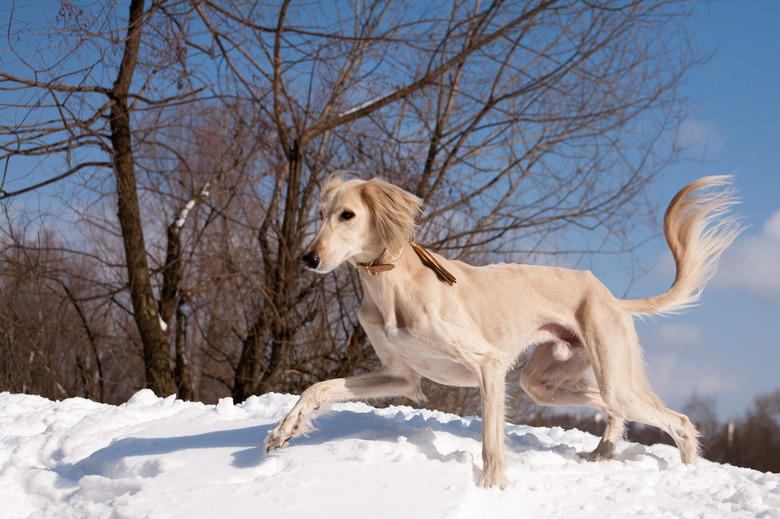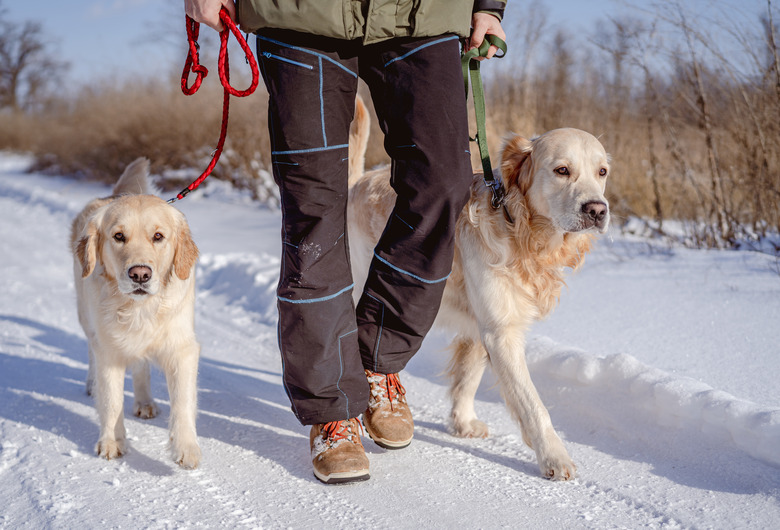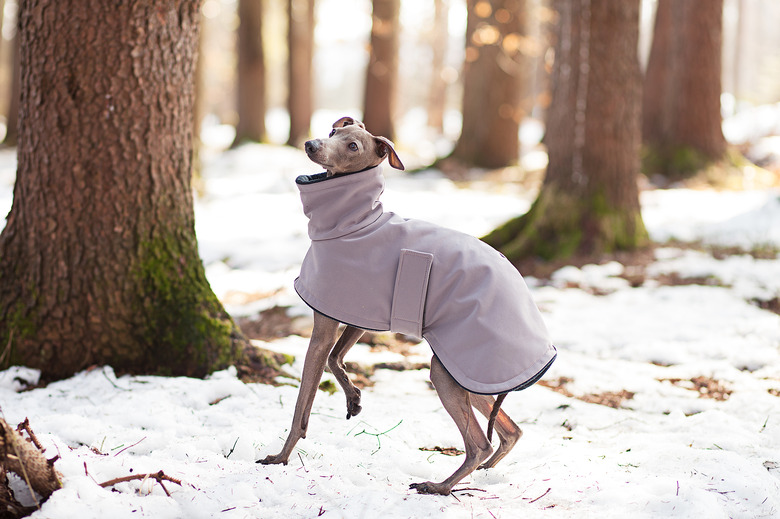How Long Can You Walk A Dog Outside When It's Cold?
The winter season brings beautiful snow and the joy of the holidays. Many dogs love romping and playing in the snow, but just like people, dogs can suffer from hypothermia and frostbite. Fortunately, there are some simple things that dog owners can do to keep their dogs safe and toasty warm during winter walks.
How long can you safely walk outside in the cold?
How long can you safely walk outside in the cold?
The amount of time you can safely keep your dog outdoors for a winter walk depends on a number of factors. Though it is safe to say that short walks are safest on cold days. A good rule of thumb when temperatures are below 32 degrees Fahrenheit is to limit walks to 10 to 20 minutes for small dogs and 30 to 60 minutes for large dogs.
Before you head out, check the weather conditions. Cold weather temperatures aren't the only concern. Wind chill, snowfall, and other precipitation can cause your dog's body temperature to drop faster.
Many factors affect how long your dog can safely stay outdoors. Consider:
- your dog's age. Elderly dogs and young puppies are less able to stay warm in cold weather.
- your dog's coat. Dogs with longer and thicker fur coats stay warmer than dogs with shorter and thinner coats.
- your dog's height. Dogs with short legs tend to get colder because they are closer to the frozen ground.
- your dog's health. Some health conditions, such as diabetes and Cushing's disease, can decrease your dog's ability to regulate their body temperature and stay warm.
Your dog's breed also plays a large role in how long it is safe to stay outdoors. Some dog breeds are bred to be sled dogs and thrive in cold, winter weather, such as the Samoyed and Alaskan malamute. Other breeds that tend to thrive in colder temperatures include:
- Siberian husky
- Alaskan Malamute
- Great Pyrenees
- Saint Bernard
- Bernese mountain dog
- Canadian Eskimo dog
These breeds have thick undercoats that help keep them warm, but you still need to monitor your dog outdoors, especially if they are used to spending most of the day indoors.
Recognize the signs of hypothermia and frostbite
Recognize the signs of hypothermia and frostbite
If you and your dog spend too long out in the cold, there is a risk of hypothermia. If your dog starts shivering, that is an obvious sign that your dog is cold but there are other signs of hypothermia to watch for, including:
- whining
- anxiety
- refusing to walk or walking slowly
- breathing quickly
- dilated pupils
If your dog shows any signs of hypothermia, take them inside where it is warm right away and contact your veterinarian. Frostbite is also a concern, especially on the dog's paws, tail, and ears. It can be difficult to catch frostbite early but watch for symptoms such as:
- swelling
- pain and tenderness
- pale or discolored skin
- skin ulcers
As with hypothermia, if your dog shows any signs of frostbite, contact your veterinarian right away.
Paw care for winter dog walks
Paw care for winter dog walks
Your dog's paws are pretty tough as they regularly walk on pavement and rocks, but the cold, snow, and ice can cause cold injury and damage. Check your dog's paws regularly for any cracks on the paw pads. These can get deep enough to bleed which can be painful but puts your dog at risk of infection.
Trim the fur between your dog's toes. Snow can accumulate on the fur, eventually forming an ice ball that can be uncomfortable for your dog.
Finally, when you return from the walk, wash off your dog's paws and stomach. Many municipalities put down salt or other ice-melting chemicals to keep the sidewalks and roads safe. However, these chemicals can irritate your dog's skin and paws. They can also be quite harmful if your dog licks the chemicals off of their paws.
Protective gear for winter walks
Protective gear for winter walks
Purchasing protective gear for your winter walks can help keep your dog safe and warm. A water-resistant coat for your dog goes a long way to keeping your dog warm and it helps protect your dog from wind, rain, and snow. A dog sweater can help keep your dog warm, but it won't protect them from getting wet.
Paw protection is very important to help protect against harmful chemicals, sharp and slippery ice, and frozen ground. Find a set of dog boots that fit your dog's paws to give them some additional protection. Not all dogs will tolerate dog booties. But with some patience and plenty of positive reinforcement, you can teach them to wear booties.
Cold, grey days can make visibility a problem for drivers, so consider reflective gear for your dog, whether that be reflective tape on the dog's winter coat or a reflective harness and leash. You can even get a light to attach to the dog's collar or harness.
Other winter tips for safe daily walks
Other winter tips for safe daily walks
There are some other things you can do to keep your dog safe throughout the winter.
- Fit your dog with an ID tag and microchip. Snow can cover scents that your dog may rely on to get home. Identification can help your recover your dog if they get lost.
- Keep your dog off of frozen water. Your dog could fall through thin ice and get severe hypothermia or even drown.
- Don't allow your dog to lick the ground near cars. Vehicles can leak antifreeze, which has a sweet taste but is extremely toxic.
- Make sure your dog is drinking plenty of water. They should drink enough water so they don't get dehydrated.
- Adjust your dog's meal size. Some dogs need more calories to stay warm. Consult your veterinarian to decide if your dog needs more food and if so, how much.
The bottom line
The bottom line
Keeping up with regular exercise and walks for your dog is key to keeping your dog healthy and happy during the winter. However, freezing temperatures, icy conditions, and ice melt chemicals all pose a serious health risk to your dog. Keep them safe this winter by keeping walks short and dressing your dog in protective gear such as booties and coats. After the walk, wash your dog's paws and stomach and make sure they drink plenty of water. Don't hesitate to contact your veterinarian if you see any signs of hypothermia or have any concern's about your dog's health.


